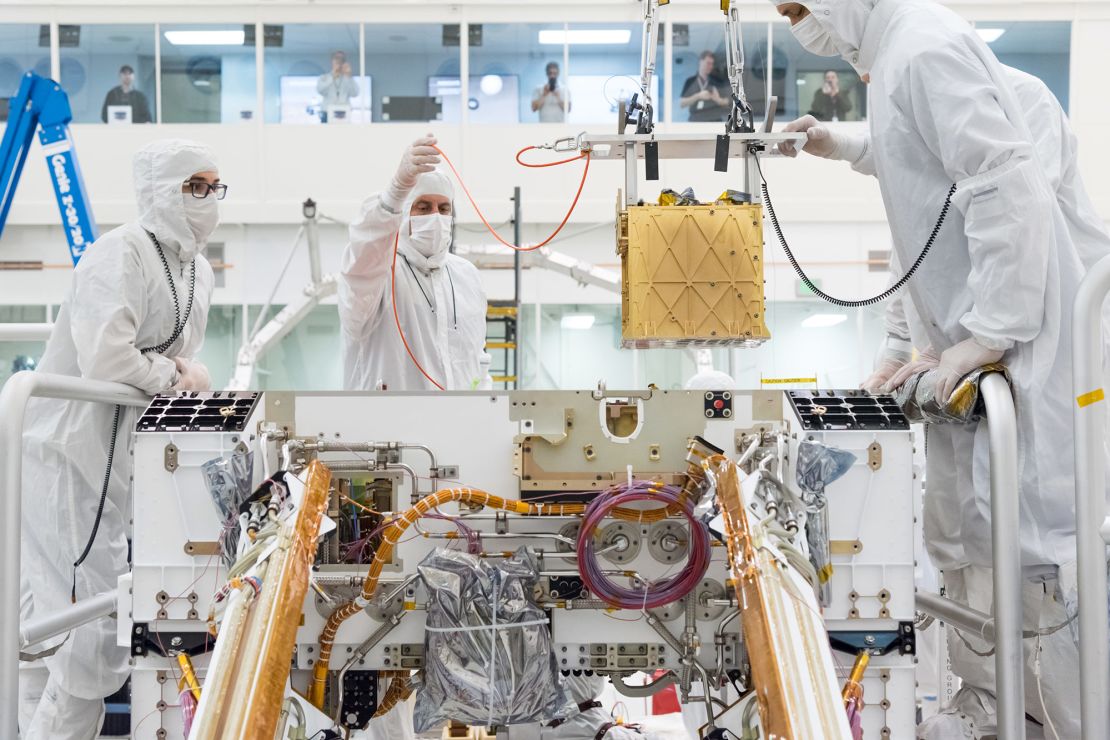Sign up for CNN’s Wonder Theory science newsletter. Explore the universe with news on fascinating discoveries, scientific advancements and more.
Humans are one small step closer to landing on the red planet.
The Mars Oxygen In-Situ Resource Utilization Experiment – better known as MOXIE – has been successfully making oxygen from Mars’ carbon dioxide-rich atmosphere in a series of tests, as part of NASA’s Perseverance rover mission, which landed on Mars in February 2021.
MOXIE was able to produce oxygen on seven experimental runs undertaken since testing began in April 2021, in a variety of atmospheric conditions including during the planet’s day and night, and through different Martian seasons, according to research published Wednesday in the journal Science Advances.
(Like Earth, Mars has distinct seasons, but they last longer than seasons here on Earth since Mars takes longer to orbit the Sun, according to NASA.)
In each run, MOXIE reached its target of producing six grams of oxygen per hour – about the rate of a modest tree on Earth.
“This is the first demonstration of actually using resources on the surface of another planetary body, and transforming them chemically into something that would be useful for a human mission,” said MOXIE deputy principal investigator Jeffrey Hoffman, a retired astronaut and professor at Massachusetts Institute of Technology’s department of aeronautics and astronautics in a news release.
“It’s historic in that sense.”
MOXIE is small – about the size of a toaster – to allow it to fit aboard the Perseverance rover. It is built to run for short periods, starting up and shutting down with each run, to align with the rover’s exploration schedule and other mission responsibilities.
A scaled up MOXIE would include larger units that could run continuously and potentially be sent to Mars ahead of a human mission to produce oxygen at the rate of several hundred trees. This would allow the generation – and storage – of enough oxygen to both sustain humans once they arrive and fuel a rocket for returning astronauts back to Earth.
MOXIE’s steady output since arriving on Mars is a promising first step toward that goal, the researchers said, although more fine-tuning is necessary to make sure it can run at dawn and dusk – times when the planet’s temperature is changing substantially, said Michael Hecht, principal investigator of the MOXIE mission at MIT’s Haystack Observatory.

How MOXIE works
The thin Martian atmosphere is 96% carbon dioxide, which isn’t much help to oxygen-breathing humans.
It is also far more variable than the Earth’s atmosphere. “The density of the air can vary by a factor of two through the year, and the temperature can vary by 100 degrees,” Hoffman said. “One objective is to show we can run (MOXIE) in all seasons.”
MOXIE works by dividing up carbon dioxide molecules, which are comprised of one carbon atom and two oxygen atoms – hence its chemical formula CO2. It separates out the oxygen molecules and emits carbon monoxide as a waste product.
Engineers are still testing MOXIE. They plan to push its capacity and increase its production, with a focus on the Martian spring months when researchers said atmospheric density and carbon dioxide levels are particularly high.
“The next run coming up will be during the highest density of the year, and we just want to make as much oxygen as we can,” Hecht said. “We’ll set everything as high as we dare, and let it run as long as we can.”
MOXIE also appears to be hardy. It has operated successfully despite having to repeatedly turn itself on and off for the test runs – a thermal stress that can degrade the system over time. This would suggest that a full-scale system, designed to run continuously, could do so for thousands of hours, the news release from MIT said.
“To support a human mission to Mars, we have to bring a lot of stuff from Earth, like computers, spacesuits, and habitats,” Hoffman said in the statement. “But dumb old oxygen? If you can make it there, go for it – you’re way ahead of the game.”






